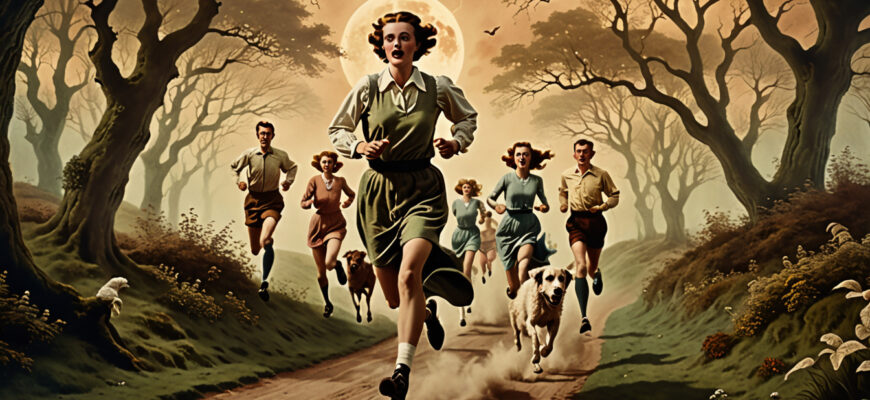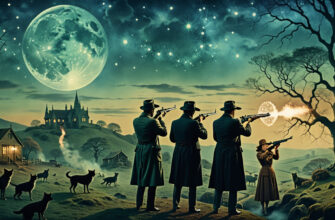Running dreams wrap themselves in rich layers of meaning, often tapping into questions many wrestle with: What am I fleeing or chasing? Is there something inside or outside that feels too much to face? These dreams can mirror how trauma, identity, and culture shape what bubbles up in our subconscious. Whether it’s the pounding of feet on pavement or the breathlessness of being pursued, running in dreams carries metabolic energy packed with symbolism that invites us to listen closer. It’s not just about the act itself but about where the psyche is traveling — toward escape, healing, or somewhere in between. This exploration is most vibrant when viewing running dreams through lenses that honor marginalized experiences, weaving queer and feminist perspectives with trauma awareness.
- What Running Dreams Represent in the Psyche
- Why a Queer and Feminist Perspective Matters
- The Role of Dreams in Healing and Self-Knowledge
- Subtle and Symbolic Variations of Running Dreams
- Running Barefoot: Vulnerability and Grounding
- Running in Place: Feeling Stuck or Cyclical Patterns
- Being Chased by Shadows and Mythic Beings
- Listening to Your Feelings: What Your Psyche Wants You to Confront and Reclaim
- Honoring Emotional Responses Within the Dream
- Psyche’s Nudges: Identifying What Needs Healing
- Reclaiming Power Through Dream Interpretation
What Running Dreams Represent in the Psyche
Running in dreams often reflects a dynamic tension between pushing away and moving toward parts of life or self. On one hand, the experience can symbolize fleeing—a flight from internal struggles like anxiety, unresolved trauma, or emotional pain that the waking mind may be avoiding. On the other, it mirrors pursuit—chasing ambitions, desires, or liberation that feel just out of reach. The body’s movement in these dreams is a metaphor for navigating inner and outer realities.
Trauma carves distinct pathways in the symbolism of running dreams. When trauma is present in one’s life story, running scenes can feel intense, desperate, or repetitive—highlighting cycles of survival and the imprint of past body memories. For someone who has faced oppression or abuse, running might express both a literal and psychic attempt to escape danger. At the same time, it can be a form of resistance, a refusal to remain trapped by those histories.
Why a Queer and Feminist Perspective Matters
Looking at running dreams through a queer, feminist lens changes the way we understand who gets to hold power in their stories and which narratives become visible. Traditional interpretations of running dreams often default to hegemonic ideas of strength, speed, or escape tied to narrow definitions of capability and success. These miss how people with diverse identities experience running—not just physically but spiritually and emotionally.
This approach challenges dominant narratives by centering intersectionality—how race, gender, sexuality, and trauma histories overlap. It invites dreamers to embrace their full complexity, knowing that queer identities bring unique relationships to themes like freedom, pursuit, and vulnerability. Holding space for these differences opens the door to dream meanings that are richer, more personal, and deeply transformative.
| Traditional View | Queer, Trauma-Informed View |
|---|---|
| Running equals physical escape or goal achievement | Running includes emotional survival and resistance |
| Success measured by outward velocity | Success includes reclaiming safety and self-trust |
| Dreams interpreted without cultural context | Dreams seen as cultural and personal histories intertwined |
The Role of Dreams in Healing and Self-Knowledge
Our dreams offer invitations, whispering clues about what parts of ourselves need attention or reclaiming. Running dreams are often a call to witness both what we’re trying to outrun and what we yearn to embrace. These nocturnal stories become tools to reflect on inner conflicts and learn where power has been lost or hidden.
- Dreams as mirrors: Allow a clear view of emotional undercurrents that waking life might cloud.
- Dreams as guides: Point toward healing paths by highlighting fear, resistance, or resilience.
- Dreams as liberation tools: Provide the chance to reclaim agency by consciously interpreting and integrating messages.
Through this process, self-knowledge becomes a radical act of freedom—an essential step toward dismantling the barriers society and trauma place on queer and marginalized bodies. These running dreams remind us that we are moving through not just landscape but history and identity. Listen closely: you were born for this.
Subtle and Symbolic Variations of Running Dreams
Running Barefoot: Vulnerability and Grounding
What does it mean when you’re running barefoot in a dream? That raw connection to the earth beneath your feet can stir feelings of exposure and delicate sensitivity.
Being barefoot leaves you more open to pain—each stone, stick, or rough patch is felt deeply, mirroring a state of vulnerability in waking life. The dream reflects a body and soul tuned sharply to its surroundings, where every sensation matters.
From a queer embodiment perspective, barefoot running dreams highlight the intimate, embodied experience of identity and self-awareness. The heightened sensory input echoes how queer bodies often navigate spaces, alert to both harm and possibility in ways that non-queer bodies might not fully grasp.
Imagine someone running freely yet raw, feet grounding them while carrying the risk of discomfort or injury—this embodies a kind of courageous openness. It’s a poetic reminder that true connection often demands vulnerability and that healing can feel both tender and fierce.
Running in Place: Feeling Stuck or Cyclical Patterns
Ever dreamt you were running hard but not moving forward? That sensation grabs at a familiar tension—the frustration of feeling stuck.
Running in place within a dream often mirrors the emotional stasis and cyclical patterns in real life. It’s as if you’re expending effort but not gaining ground, reflecting how trauma might carve out grooves in the psyche that keep pulling you back into old loops.
This dream serves as a quiet, relentless signal that the inner work of healing cannot be rushed or bypassed. Sometimes, endurance looks like sitting with discomfort rather than leaping ahead.
Consider those moments when past wounds replay or old behaviors rerun, even when you’re desperate for change. The dream acknowledges this difficult space—where forward movement feels almost impossible but where resilience quietly simmers.
Being Chased by Shadows and Mythic Beings
Chases in dreams can be thrilling or terrorizing, but when what hunts you are shadows or mythic creatures, the symbolism deepens.
Shadows often symbolize unconscious fears or unresolved trauma. They’re parts of the self pushed aside, lurking just beyond awareness, saying, “You can’t outrun me forever.” Facing these shadows in dreams can be harrowing but also an invitation to integration.
When the pursuers come in mythic form—ghosts, beasts, gods, or queer mythological figures—these chases layer personal fear with cultural narratives.
Queer mythology, in particular, reclaims those mythic figures that haunt us with both menace and magic. Running from or toward them can reflect how identity and history shape our emotional terrain, pulling at ancestral or societal threads.
For example, being chased by a shadowy creature might evoke a family legacy of silenced trauma, while a mythic being could symbolize a transformative power both beautiful and terrifying, urging the dreamer to reckon with that complexity.
Listening to Your Feelings: What Your Psyche Wants You to Confront and Reclaim
Honoring Emotional Responses Within the Dream
When dreaming of running, how do the emotions land? Fear, exhilaration, or frustration aren’t just background noise—they’re signposts pointing toward inner truths.
Paying attention to these feelings allows the dream to speak more clearly. That surge of adrenaline, that sinking exhaustion, that sharp sting of terror—each carries a message the psyche desperately wants to convey.
Let those emotional currents guide where you lean in your self-reflection. Fear might shine light on areas needing protection or healing, while exhilaration could signal emerging freedom or confidence demanding recognition.
Psyche’s Nudges: Identifying What Needs Healing
Dreams about running offer subtle clues about what’s alive beneath the surface—wounds still sensitive, desires still whispered, and strengths quietly building.
If trauma is shadowing your progress, the dream might nudge you toward compassion and patience with yourself. If suppressed longings flicker at the edges, it encourages a braver embrace of what feels true.
This kind of dreamwork is more than interpretation—it’s activism at the soul level. It’s a grassroots practice where naming and exploring the unseen parts of your self begins to reclaim power.
Reclaiming Power Through Dream Interpretation
Working with running dreams can become a ritual of liberation.
- Pause: Allow yourself to sit with the dream’s feelings, without rushing past.
- Reflect: Ask which fears, hopes, or wounds are being stirred.
- Engage: Use writing, art, or conversation to bring these subconscious stories to light.
This process invites the reclaiming of your agency over the narrative your dream reveals. It opens a door for integrating those parts of yourself that might have felt powerless or hidden.
For those tuned into social justice and spiritual growth, this practice channels energy into both personal healing and collective awakening. The dream might feel like a messy map, but the journey through it can feel like coming home—to your body, your story, and your fought-for freedom.








